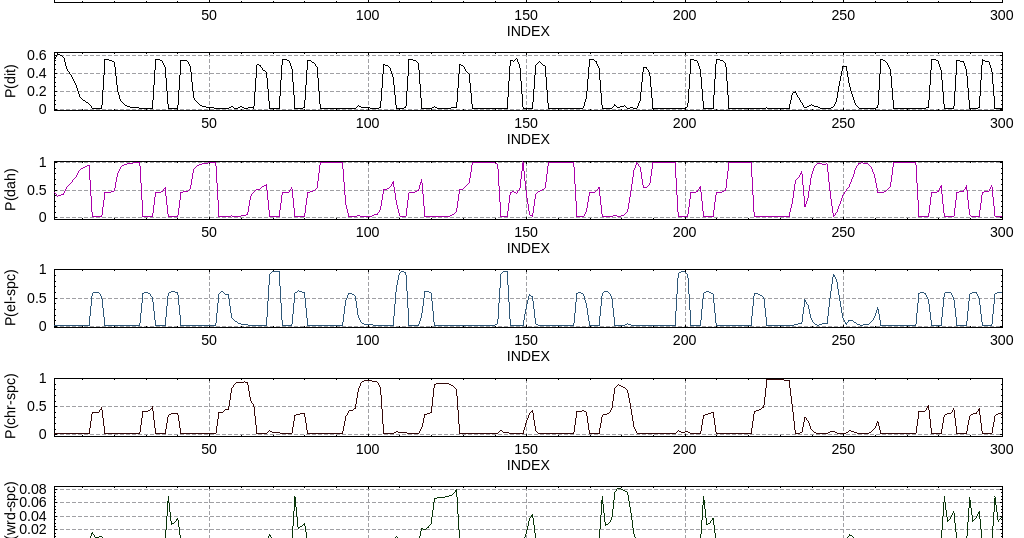

The amount of necessary data and correlations is just not there, the information is way too “high-level” and specific to learn just by “sink-or-swim”.Īn adult learns much better by “compressed learning” or difference learning. People are also less helpful or patient when asking for unknown words or explanations. What people forget is that adults do not get exposed to the same basic level of interactions that kids do. Posted in Machine Learning Tagged cnn, CTC, cw, lstm, machine learning, morse, SNR, tensorflow Post navigation We find that fascinating, and wonder what other applications this would be good for. By comparing patterns to labels in the training data, it inferred what the characters mean, and essentially taught itself Morse code in about an hour. Other Morse decoders use lookup tables to convert sound to text, but it’s important to note that this one doesn’t. The model was also able to pull Morse out of a signal with -6 dB signal-to-noise ratio, even though it had been trained with a much cleaner signal. The first training run only resulted in about 36% accuracy, but a subsequent run with shorter snippets ended up being 99.5% accurate. Using a few lines of Python, he converts short, known snippets of Morse to a grayscale image that looks a little like a barcode, with the light areas being the dits and dahs and the dark bars being silence. But things take an unexpected turn right from the start, as uses a Tensorflow handwriting recognition implementation to train his model. His method uses curated training data to build a model, namely Morse snippets and their translations, as is the usual approach with such systems. The blog entry by the delightfully callsigned reads like a scientific paper, with good reason: really seems to know a thing or two about machine learning. Militaries use immersion language instruction, as do diplomats and journalists, and apparently computers can now use it to teach themselves Morse code. The program is also not intended to identify single characters, as the precision will be lower with shorter inputs.Conventional wisdom holds that the best way to learn a new language is immersion: just throw someone into a situation where they have no choice, and they’ll learn by context. decoding in smaller time steps, taking into account speed changes.keying speed detection (characters/words per minute).signal extraction with narrow bandpass filter, based on identified pitch.If the decoder were to be extended to noisy inputs with major differences, at least following changes would be required This decoder has been tested and developed with inputs that have The notebook is not updated actual implementation differs. Translate morse coded characters into plain text, print outputĮxploratory data analysis and first program implementation is performed in this jupyter notebook.Create dash/dot character array, which is then broken to pieces by character and word space indices.The lengths of periods are compared, and then labeled automatically based on number of samples. Identify dash/dot characters and different breaks with K-Means clustering.Calculate durations of continuous on/off samples.Convert envelope to binary 0/1 signal by applying threshold, by default 0.5 * max(envelope).

This envelope signal is smooth and always greater than or equal to zero. Extract analytic envelope from the signal by calculating moving RMS amplitude with Hann window of default 0.01 second width.morse import MorseCode morse_code = MorseCode.


 0 kommentar(er)
0 kommentar(er)
